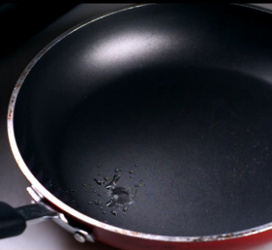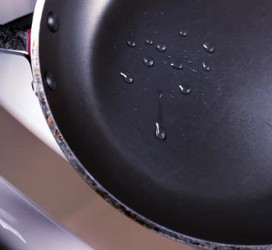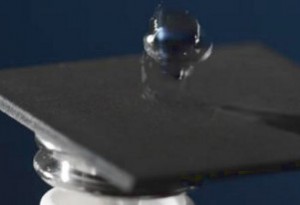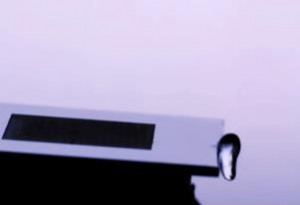How many products have you used to try to eliminate the limescale on your shower screen? Daily, water containing lime and shower gels can leave traces on the screen. Dirt exposed on the screen penetrates the glass through tiny pores. If you have not yet found the formula that helps your daily cleaning, a screen with hydrophobic treatment, will help as it repels water, either in a conventional or a more innovative way.
So you can appreciate the difference, we have exposed some cases.
It is impossible to see the micro pores of any solid surface without any amplification. The most common water repellent treatment, a liquid, creates a smooth surface filling these pores. They are products composed of resins or transparent polymers, externally treating your shower screen. As for its resistance to high temperatures and durability, the fact is that over time there are certain limitations.
Super hydrophobic
These treatments have high water repellence due to nanoparticles present in the composition. In the pictures below you can see a comparison of the degree of water repellence depending on the type of surface.
Here is a demonstration of how a fabric can become waterproof to any liquid. For this purpose, scientists from the Technological University of Lodz, Poland, have created a wax coating to apply on the surface of the fabric and does not alter its internal structure. Thus the water does not pass between the fibres.
The standard anti-lime scale used by Mundilite is a hydrophobic treatment applied at room temperature. With it, you will achieve easier cleaning of your shower screen.
Another alternative would be an integrated coating at the base with silicon oxide, without waxes, silicones or oils, like Nano4GlassCeramic. Like the standard treatments, its function is to repel liquids and scale. It is an antibacterial product, resistant to high temperatures and ice, also protecting from UV rays. This is ecologically friendly, since you need less water and cleaning products for the maintenance of your shower screen. In addition, durability can be extended over time if applied properly.
PowerClean is a super hydrophobic treatment developed by Mundilite with which it has managed to create an invisible film on the glass surface of the shower screen. This way, calcareous incrustations can be largely avoided. To prolong the durability of the treatment, as well as a greater and more effective adherence to the glossy surface, the product is applied at high temperatures.
Tips for routine cleaning of your shower screen
We assume that your shower screen is composed of different materials such as glass, plastic or aluminium. Each requiring specific cleaning , bearing in mind that you will need to use neutral soap in all cases.
If your shower screen is made of glass or acrylic, gels and neutral soaps are the best. Do not use steel wool or abrasive cloths, you could damage it!
Rinse the shower screen with cold water and brush the lime scale off the surface., if you use hot water, once it has evaporated the lime scale will remain.
If the unwanted substances are still present, it is recommended to use lemon juice or acetic acid (vinegar) diluted in water. Repeat the process if necessary, and leave for a few minutes before washing off with cold water. Without doubt the shower screen will be like brand new! If after installation of the shower screen there is a grease spot on the glass, use a neutral gel or soap to clean.
Another common concern is how to clean aluminium profiles, for this try a gentle cleanser specifically made for this material. Also, if your shower screen has guided self-cleaning or if it does not have lower runners, this will make cleaning easier. On the other hand, lubricating the bearings lengthens its life, thus avoiding buying spare parts. You’ll save for sure!
Remember that, over time, as you use the shower, the effectiveness of the original anti-scale treatment may decrease. If this is your case, Mundilite offers you a standard anti lime treatment to apply as a top up.
Currently most hydrophobic materials are based on chemical coatings. On the other hand scientists at the University of Rochester, New York, have developed a laser technique that creates micro and nano-structures to give new properties to metals. For now it has been tested on the surface of titanium, platinum and brass plates. Perhaps in the future it will apply to glazed surfaces. In the following link you can see a demonstration of the results of this laser
Perhaps because of this post you have discovered why your screen is still dirty even though you clean it every day of the week. Hopefully these tips will help with keeping your shower screen clean until you decide to change it and save on products with Mundilite.





